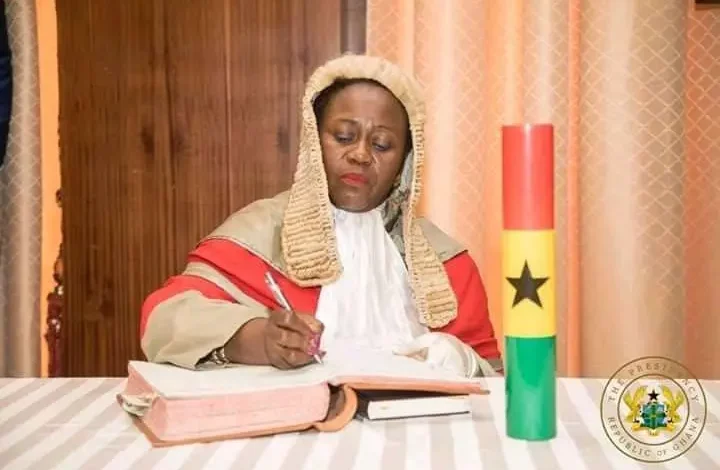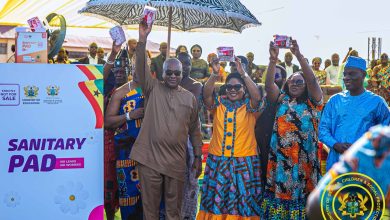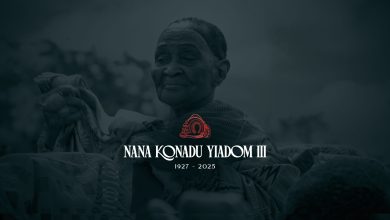Specific Grounds For Sacking CJ Torkornoo Not Disclosed, This Is Why

After months of legal battles, President John Dramani Mahama has officially removed Chief Justice Gertrude Araba Sackey Torkornoo from office. The exact reasons for her removal remain undisclosed, sparking political debate, with the opposition New Patriotic Party describing the action as political victimization. However, the government has clarified that this is a constitutionally mandated process.
Minister of State for Government Communications, Felix Kwakye Ofosu, has affirmed that President Mahama’s decision to remove Chief Justice Torkornoo was fully consistent with the Constitution. During an appearance on Channel One TV’s Akwatia Watch program, Kwakye Ofosu explained that the President’s actions strictly followed Article 146 of the 1992 Constitution, which outlines the procedure for removing a Chief Justice.
“The role of the President is clearly defined under Article 146, and since March this year, the President has strictly adhered to the constitutional tenets,” Kwakye Ofosu stated. He emphasized that the President’s actions were driven by constitutional requirements, not personal beliefs. In accordance with Article 146(9), President Mahama removed Justice Torkornoo from office immediately after receiving the report from the Committee of Inquiry.
This committee was established under Article 146(6) to investigate a petition submitted by a Ghanaian citizen, Daniel Ofori, calling for the Chief Justice’s removal.
Why the Chief Justice Was Removed
President Mahama removed Chief Justice Torkornoo after a constitutional inquiry found her guilty of “misconduct.” A statement from the presidency on September 1, 2025, announced the removal, which followed the receipt of a report from a committee established under Article 146(6). The committee investigated a petition brought against her by Daniel Ofori.
The presidency’s statement confirmed that the committee found that Justice Torkornoo had engaged in “stated misbehavior” within the meaning of Article 146(1). Although the specific details of the misconduct were not made public, the report concluded that her conduct was “inconsistent with the high office she occupied and, therefore, warranted removal.”
“The Committee, after a thorough review of the petition and evidence adduced, established grounds of stated misbehaviour and recommended the removal of the Chief Justice,” the statement explained. The President acted on this recommendation, which is binding under Article 146(9). Justice Torkornoo is the first Chief Justice in Ghana’s history to be dismissed under this constitutional provision.
Why Grounds for Dismissal Cannot Be Disclosed
Felix Kwakye Ofosu has clarified that the government is legally restricted from disclosing the specific reasons for the Chief Justice’s removal. Speaking on Channel One TV, he explained that Article 146 of the 1992 Constitution prohibits the public disclosure of the proceedings of the committee that investigated the petitions against her.
Kwakye Ofosu stated, “The committee recommended the removal of the CJ. As you are fully aware, Article 146 does not permit disclosure of the proceedings of the committee.” He noted that while the government is constitutionally barred from making the details public, the former Chief Justice herself has been formally notified of her removal and the reasons behind it in a letter from the President’s Secretary, along with a warrant as prescribed by Article 146.
He stressed that the government, and specifically Jubilee House, cannot “breach the Constitution of Ghana, which bars us from discussing details surrounding this entire proceeding.”
What Does Article 146 Say?
(1) A Justice of the Superior Court or a Chairman of a Regional Tribunal shall not be removed from office except for stated misbehaviour or incompetence or on ground of inability to perform the functions of his office arising from infirmity of Body or mind.
(2) A Justice of the Superior Court of Judicature or a Chairman of a Regional Tribunal may only be removed in accordance with the procedure specified in this article.
(3) If the President receives a petition for the removal of a Justice of a Superior Court other than the Chief Justice or for the removal of the Chairman of a Regional Tribunal, he shall refer the petition to the Chief Justice, who shall determine whether there is a prima facie case.
(4) Where the Chief Justice decides that there is a prima facie case, he shall set up a committee consisting of three Justices of the Superior Courts or Chairmen of the Regional Tribunals or both, appointed by the Judicial Council and two other persons who are not members of the Council of State, nor members of Parliament, nor lawyers, and who shall be appointed by the Chief Justice on the advice of the Council of State.
(5) The committee appointed under clause (4) of this article shall investigate the complaint and shall make its recommendations to the Chief Justice who shall forward them to the President.
(6) Where the petition is for the removal of the Chief Justice, the President shall, acting in consultation with the Council of State, appoint a committee consisting of two Justices of the Supreme Court, one of whom shall be appointed chairman by the President, and three other persons who are not members of the Council of State, nor members of Parliament, nor lawyers.
(7) The committee appointed under clause (6) of this article shall inquire into the petition and recommend to the President whether the Chief Justice ought to be removed from office.
(8) All proceedings under this article shall be held in camera, and the Justice or Chairman against whom the petition is made is entitled to be heard in his defence by himself or by a lawyer or other expert of his choice.
(9) The President shall, in each case, act in accordance with the recommendations of the committee.
(10) Where a petition has been referred to a committee under this article, the President may-
(a) in the case of the Chief Justice, acting in accordance with the advice of the Council of State, by warrant signed by him, suspend the Chief Justice;
(b) in the case of any other Justice of a Superior Court or of a Chairman of a Regional Tribunal, acting in accordance with the advice of the Judicial Council, suspend that Justice or that Chairman of a Regional Tribunal.
(11) The President may, at any time, revoke a suspension under this article.
Background
In April 2025, President Mahama suspended Chief Justice Gertrude Araba Esaaba Torkornoo after establishing a prima facie case against her, in consultation with the Council of State. This followed the filing of three petitions against her. The President then formed a five-member committee, chaired by Supreme Court Justice Gabriel Scott Pwamang, to investigate the petitions. The committee’s other members included Justice Samuel Kwame Adibu-Asiedu, Daniel Yaw Domelevo, Major Flora Bazwaanura Dalugo, and Professor James Sefah Dzisah. The committee’s finding of substantiated allegations of “stated misbehavior” led to the Chief Justice’s removal.
Related To This
CJ Torkornoo’s Removal: Leadership Without Courage Corrodes Institutions – Oliver Barker
Can President Mahama Remove Chief Justice Torkornoo? Everything You Need To Know




